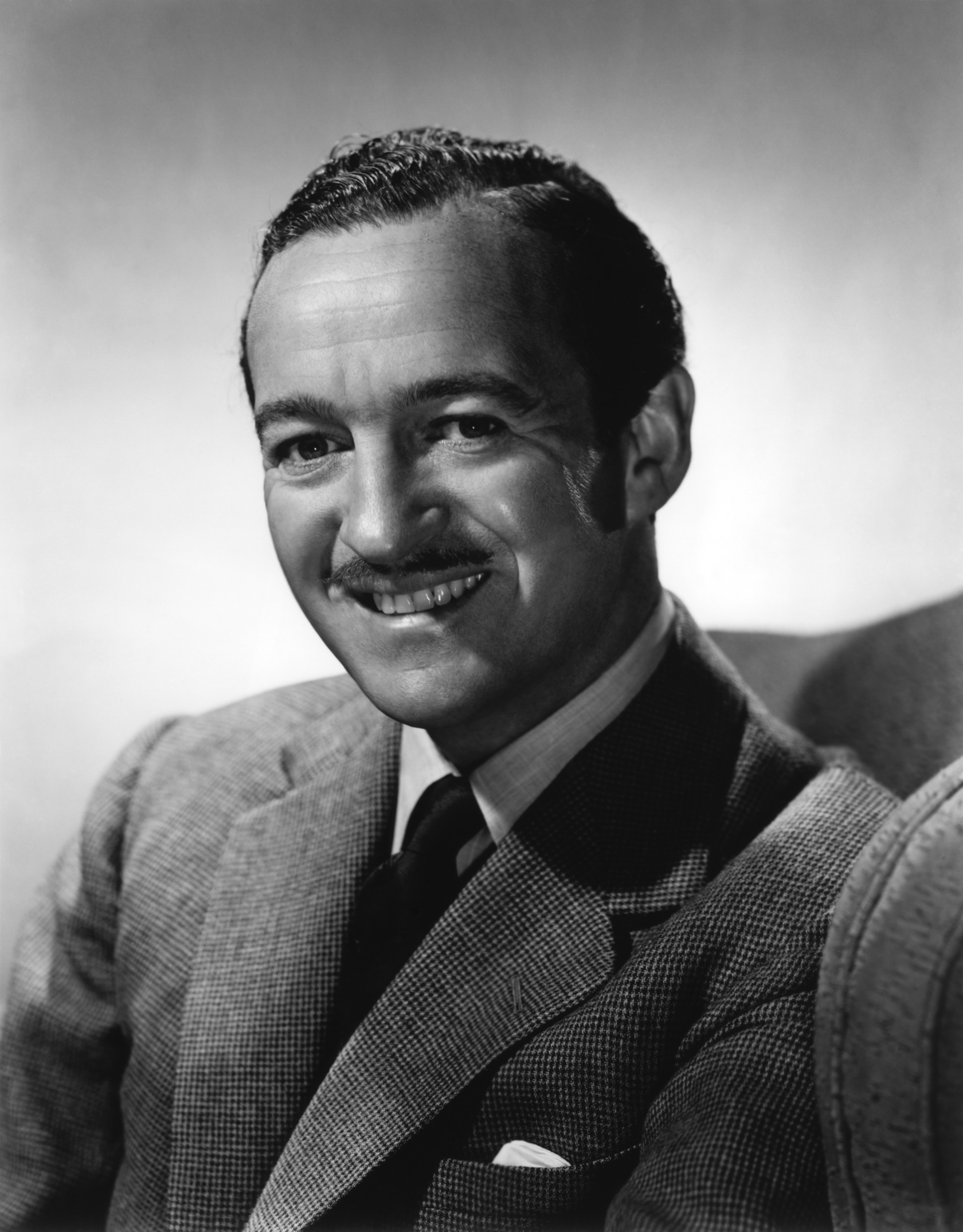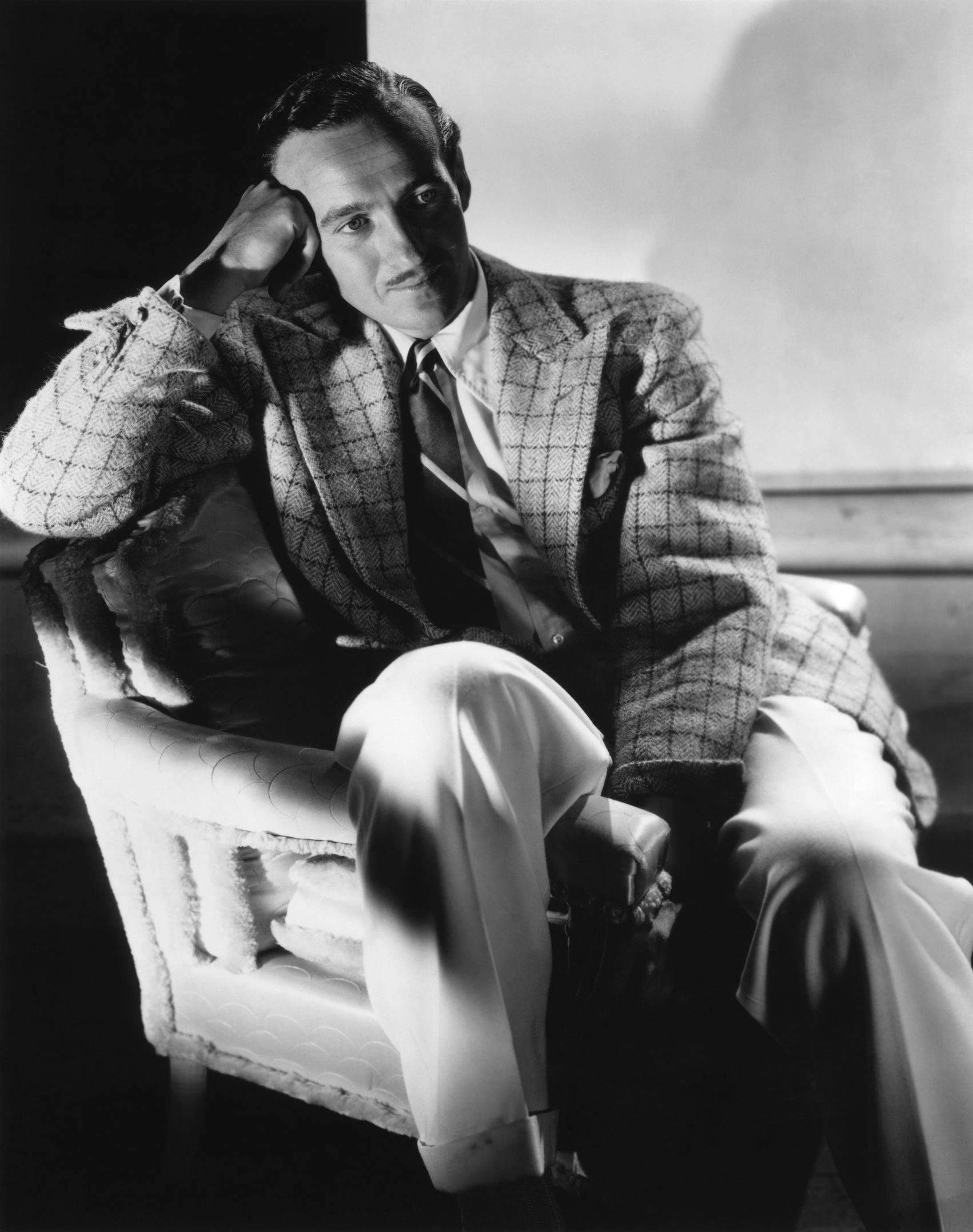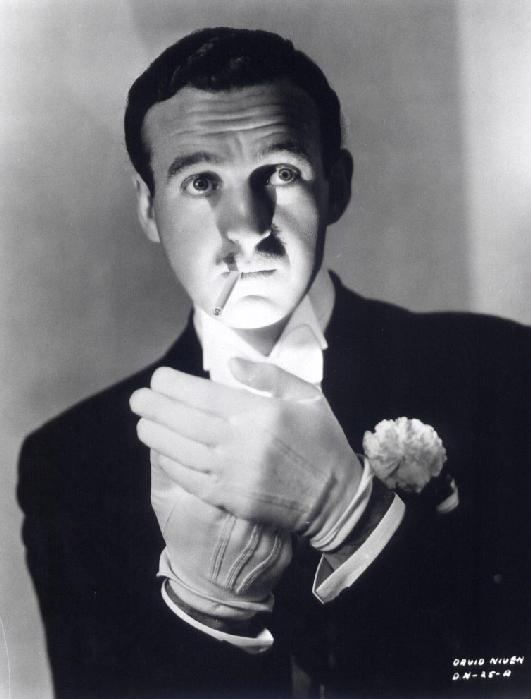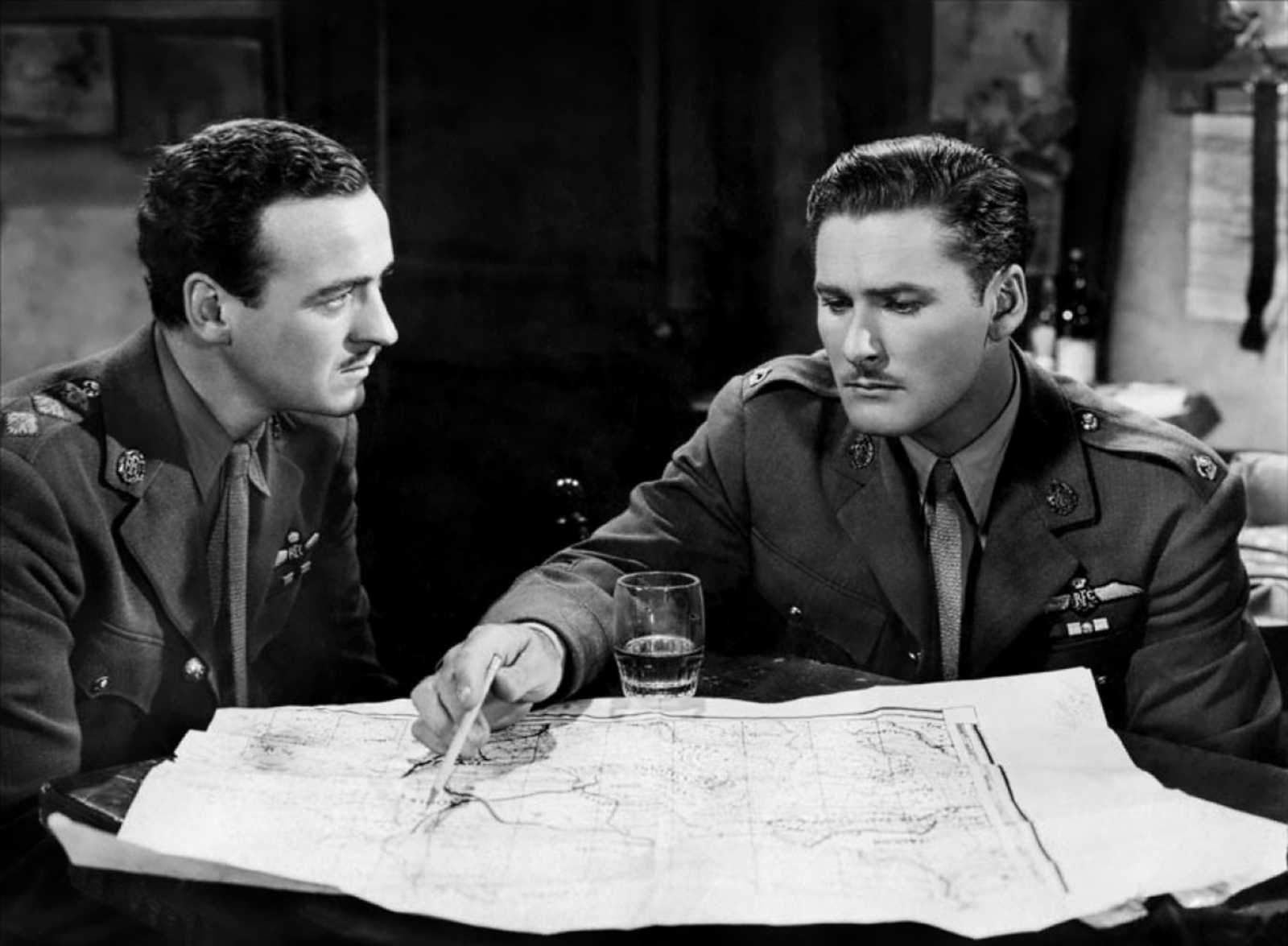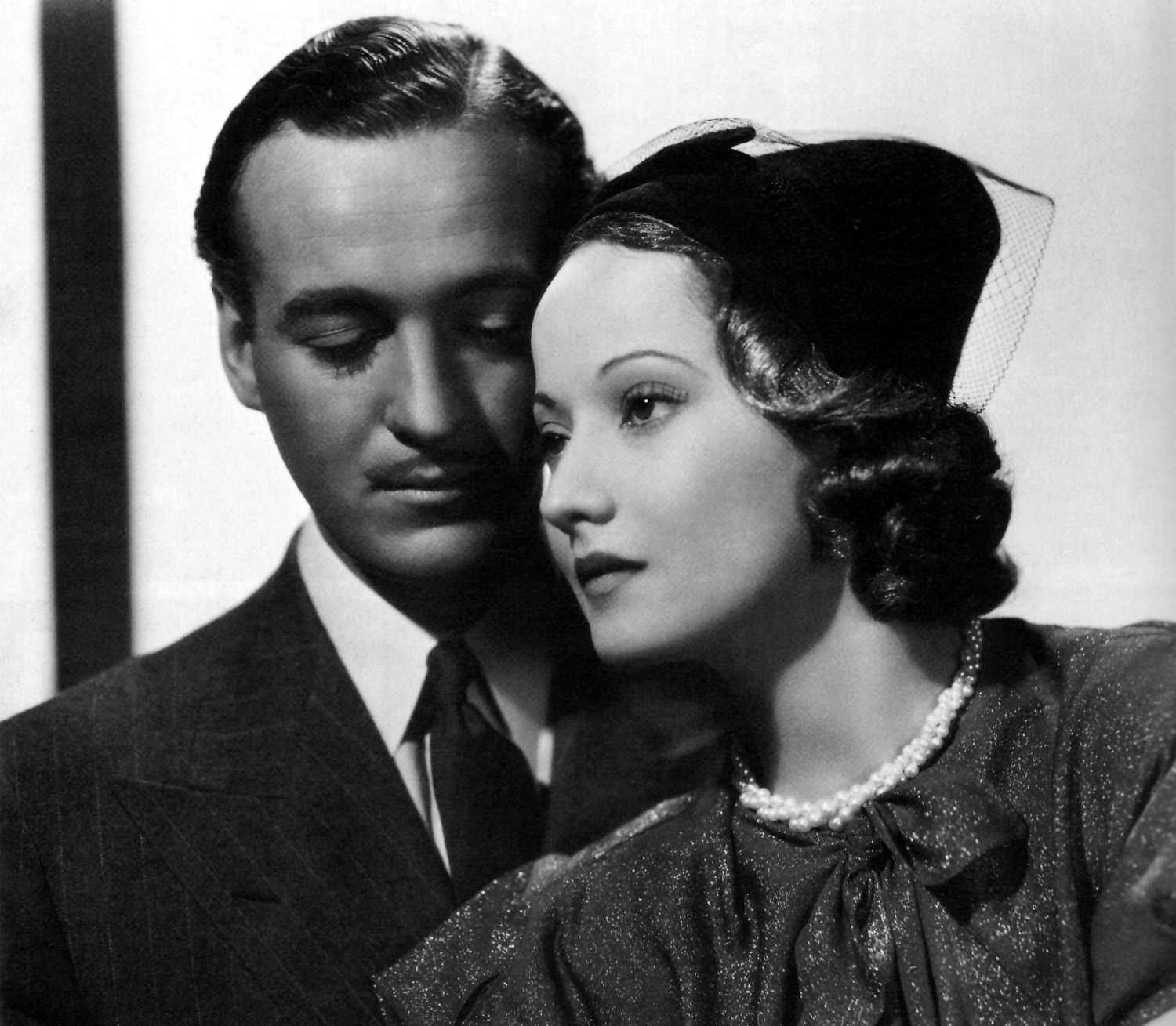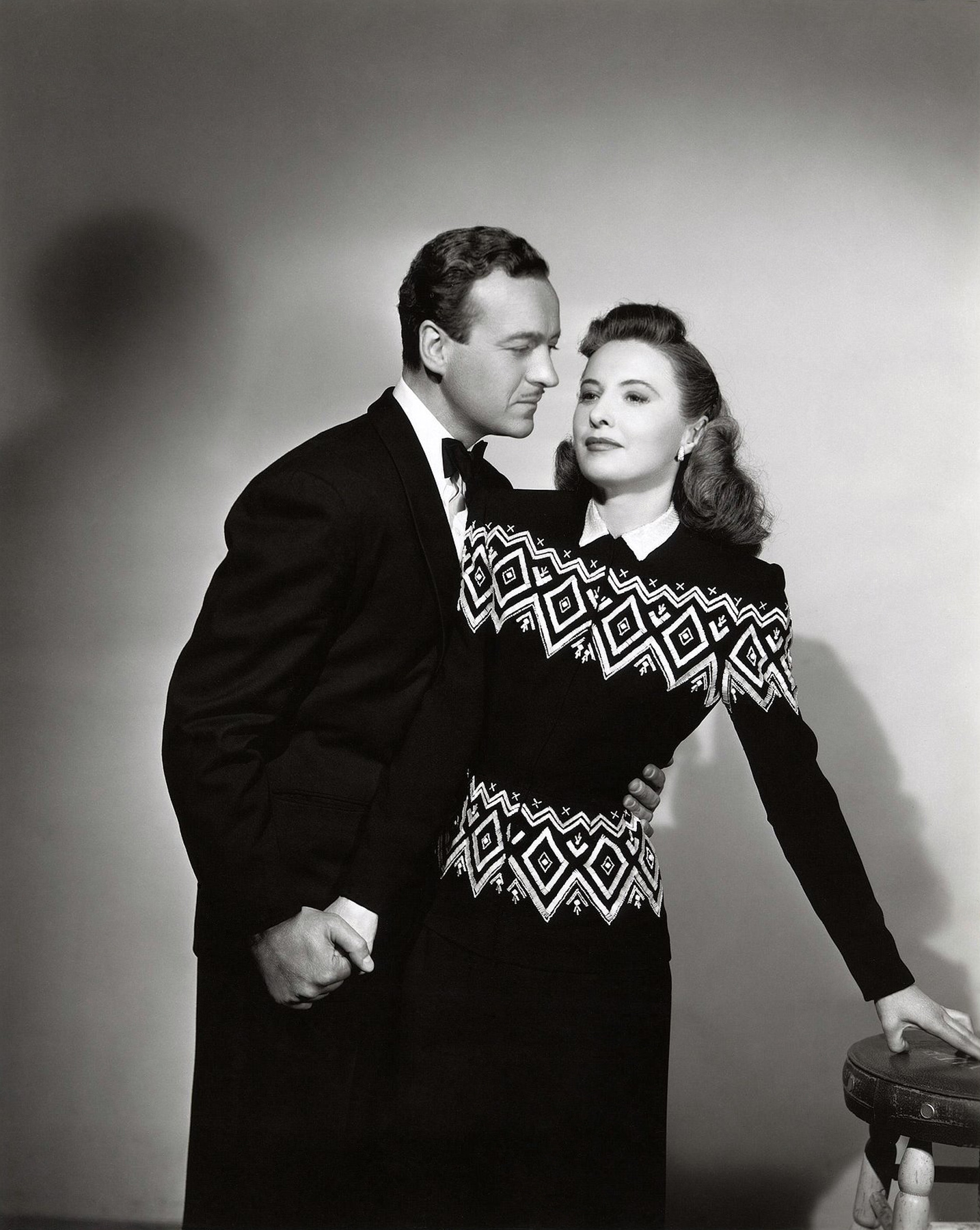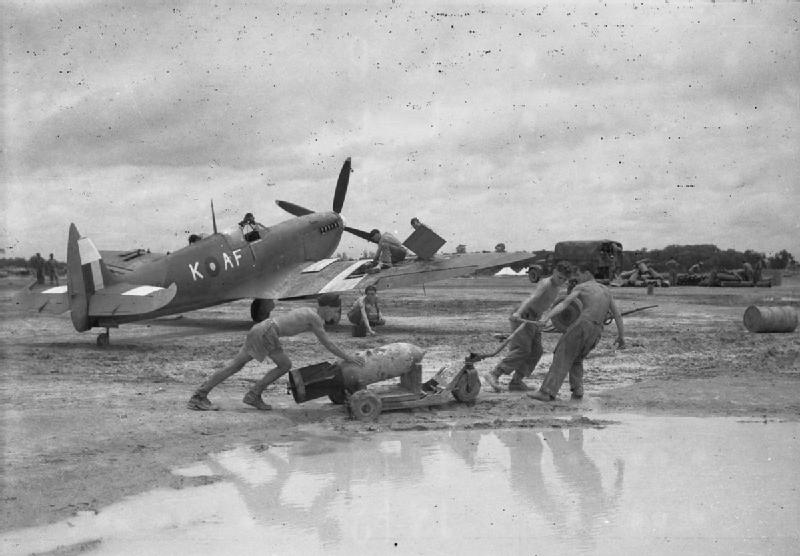Late last year I blogged about a little score at one of my local charity shops. At the time I focussed on the books and their subject whilst saying of the ties that I would get to them later. Well, having recently obtained two more items of neckwear I thought now would be the time to go through them all.
 So, starting with the original pair from December I'll deal with the least "vintage-y" first - the right-hand one of the two, an old Next design made of lightweight silk. Despite the high street name and the insubstantial nature of its fabric it does have some things going for it. The thinner silk makes it pleasant to knot and its length is perfect (more on that later). It also has a rather nifty trick up its sleeve (or rather its blade, perhaps!) - despite being thin silk the pattern is such that from even a short distance away it resembles a much more highly crafted necktie that could easily be mistaken for a woven silk or even a woollen one. Blue, brown and gold colours means that it goes with several different outfits - this one's got a busy life in front of it.
So, starting with the original pair from December I'll deal with the least "vintage-y" first - the right-hand one of the two, an old Next design made of lightweight silk. Despite the high street name and the insubstantial nature of its fabric it does have some things going for it. The thinner silk makes it pleasant to knot and its length is perfect (more on that later). It also has a rather nifty trick up its sleeve (or rather its blade, perhaps!) - despite being thin silk the pattern is such that from even a short distance away it resembles a much more highly crafted necktie that could easily be mistaken for a woven silk or even a woollen one. Blue, brown and gold colours means that it goes with several different outfits - this one's got a busy life in front of it. The second of the two is a study in opposites. A really thick woven silk, its quality is quite tangible even before you see the name - Wolsey. Vintage inasmuch as Wolsey don't seem to make ties any more, it is otherwise a fairly pedestrian design but once again goes well with a range of dark colours. The red flecks are also a welcome touch. However so thick is this tie that it really needs to be worn with a cutaway collar, and only certain knots work well with it.
The second of the two is a study in opposites. A really thick woven silk, its quality is quite tangible even before you see the name - Wolsey. Vintage inasmuch as Wolsey don't seem to make ties any more, it is otherwise a fairly pedestrian design but once again goes well with a range of dark colours. The red flecks are also a welcome touch. However so thick is this tie that it really needs to be worn with a cutaway collar, and only certain knots work well with it.The two newest arrivals are both very similar to one another. I came across them last Thursday in my local Barnados which is quite unusual in that very rarely do I unearth anything of interest there and - it has to be said - it does seem to be at the higher end when it comes to prices (although neither points have been my experience at other branches). These two beauties however, hanging amongst an unremarkable number of polyester jobs, were a princely 99p each!

 They are two of the loveliest traditional knitted ties - 100% wool with the narrower-style blade - both made by two now-defunct tie-makers. The first is a green-grey colour and made by Tern. It has obviously been worn many times but once I get it cleaned up a bit I'm sure it will have many years of life left in it. It knots nicely and has a good length to it.
They are two of the loveliest traditional knitted ties - 100% wool with the narrower-style blade - both made by two now-defunct tie-makers. The first is a green-grey colour and made by Tern. It has obviously been worn many times but once I get it cleaned up a bit I'm sure it will have many years of life left in it. It knots nicely and has a good length to it. 
 The second of the two is by far and away my favourite, though. In a beautiful oatmeal brown, this fellow was made by the Afonwen Woollen Mill in North Wales. Although I can find no information on it, it must have been a traditional wool mill - the quality is splendid, it is in jolly good condition and knots very well indeed. If I have one tiny criticism it is that it's slightly on the long side.
The second of the two is by far and away my favourite, though. In a beautiful oatmeal brown, this fellow was made by the Afonwen Woollen Mill in North Wales. Although I can find no information on it, it must have been a traditional wool mill - the quality is splendid, it is in jolly good condition and knots very well indeed. If I have one tiny criticism it is that it's slightly on the long side.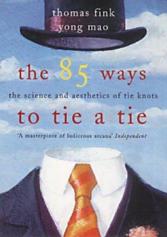 Which brings me nicely on to that which I
said I'd talk more about later - tie length. I used to have a bit of
problem with ties in this regard. This stemmed from my being
blessed/cursed with long legs (the hunt for trousers is still often a fruitless
one - the general 33in inside leg limit of most shops barely suffices; 34in is
better but harder to find, so alterations are usually the order of the day...)
and a short body. Never was a man more suited to the (now hard to find!)
traditional high-waisted trouser! The upshot of this is that ties knotted
in the common four-in-hand style would finish embarrassingly far below my
waistband. I finally overcame this sartorial problem thanks in part to the wonderful book 85 Ways to Tie a Tie (the title is slightly misleading - there are really only 13 distinct knots with the remaining 72 being variations). Three in particular produce æsthetically pleasing knots while at the same time using enough cloth to produce a good length. They are the [brilliantly-named] Cavendish, the Victoria, and the Prince Albert. Several others - for example the delightful-looking Plattsburgh/Dovorian - I am still endeavouring to master.
Which brings me nicely on to that which I
said I'd talk more about later - tie length. I used to have a bit of
problem with ties in this regard. This stemmed from my being
blessed/cursed with long legs (the hunt for trousers is still often a fruitless
one - the general 33in inside leg limit of most shops barely suffices; 34in is
better but harder to find, so alterations are usually the order of the day...)
and a short body. Never was a man more suited to the (now hard to find!)
traditional high-waisted trouser! The upshot of this is that ties knotted
in the common four-in-hand style would finish embarrassingly far below my
waistband. I finally overcame this sartorial problem thanks in part to the wonderful book 85 Ways to Tie a Tie (the title is slightly misleading - there are really only 13 distinct knots with the remaining 72 being variations). Three in particular produce æsthetically pleasing knots while at the same time using enough cloth to produce a good length. They are the [brilliantly-named] Cavendish, the Victoria, and the Prince Albert. Several others - for example the delightful-looking Plattsburgh/Dovorian - I am still endeavouring to master.Although now out of print, 85 Ways to Tie a Tie should be readily available from most libraries. Thanks to Lord Whimsy the thirteen main styles are available to download here, along with some equally splendid pocket square folds. In the meantime I continue to look out for more ties with which to practise, but these four are welcome additions for now.








